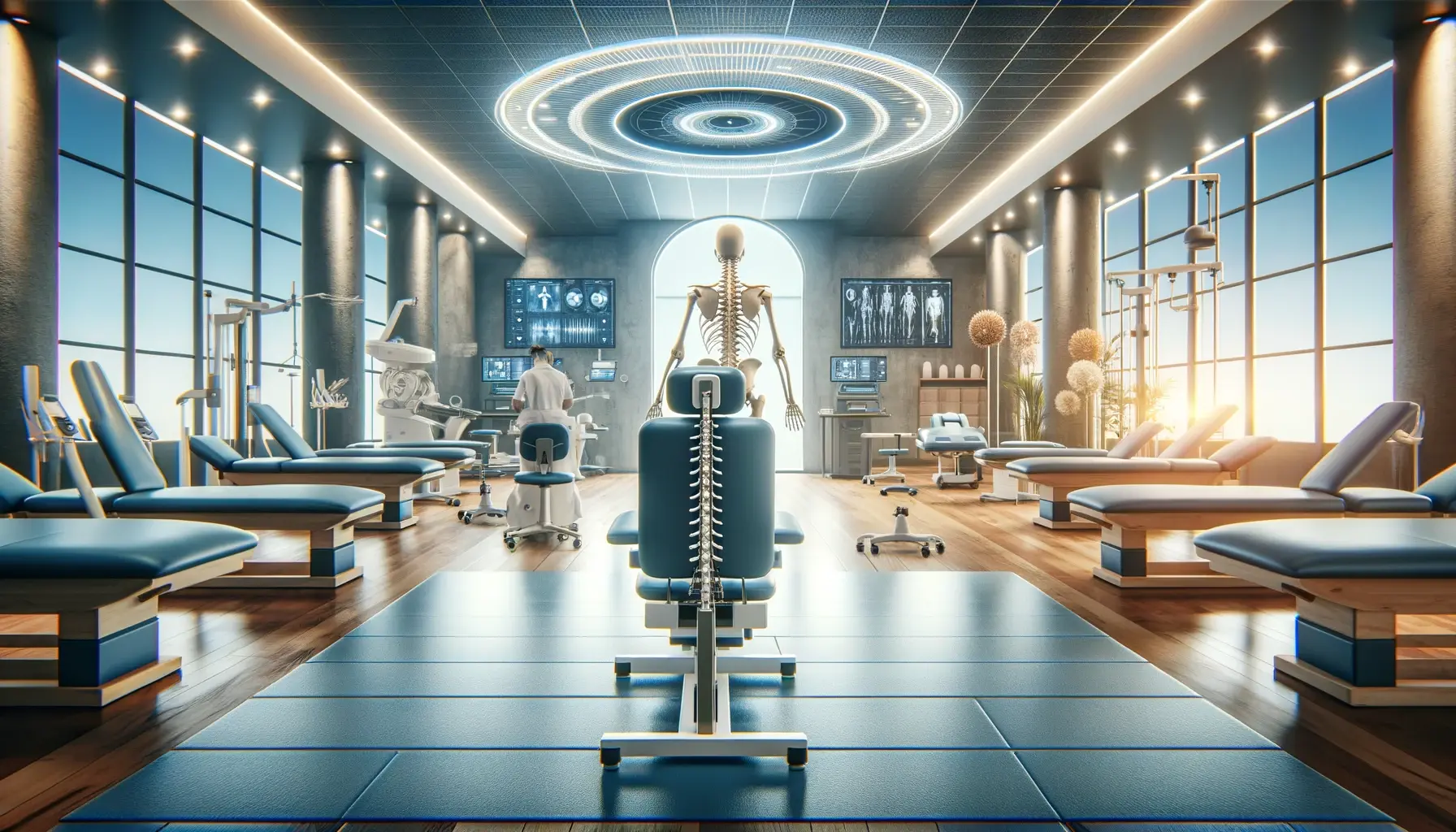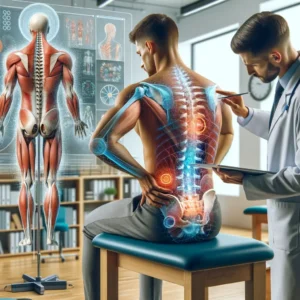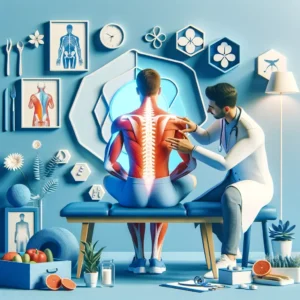Back pain is one of the most common ailments in the world, affecting millions of people every day. It can be debilitating, affecting everything from your work to your personal life. Fortunately, physical therapy has come a long way in recent years, with new and innovative techniques that can revolutionize the way you manage your back pain. In this post, we’re going to explore some of the latest and greatest physical therapy techniques that are changing the game when it comes to back pain relief. From dry needling and cupping therapy to the latest in spinal manipulation and movement-based therapy, we’ll show you how you can get the relief you need and deserve. So, whether you’re a seasoned pro or just starting your journey, read on to discover how physical therapy can revolutionize the way you manage your back pain.
1. Introduction: The prevalence of back pain and the need for innovative solutions
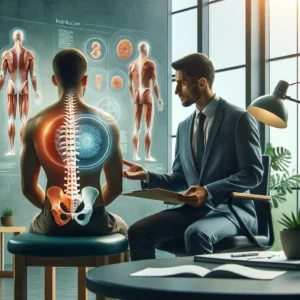
Back pain is an incredibly common ailment that affects millions of people worldwide. In fact, it is estimated that up to 80% of adults will experience back pain at some point in their lives. The impact of back pain can be debilitating, causing discomfort, limited mobility, and a decrease in overall quality of life.
Traditional methods of treating back pain, such as medication and surgery, have long been the go-to solutions for many individuals. However, these approaches often come with their own set of risks and limitations. As a result, there is a growing need for innovative techniques in physical therapy that can revolutionize back pain relief.
The field of physical therapy has been evolving rapidly, with advancements in technology and research opening up new possibilities for treating and managing back pain. From cutting-edge equipment to specialized exercises and targeted therapies, physical therapists are now equipped with a wide range of tools to address the root causes of back pain and provide effective, long-term relief.
In this blog post, we will explore some of the most innovative techniques in physical therapy that are revolutionizing back pain relief. From state-of-the-art equipment to evidence-based treatment approaches, we will delve into the exciting advancements that are changing the landscape of back pain management.
Whether you are someone who suffers from chronic back pain or a healthcare professional seeking to stay up-to-date with the latest developments in the field, this blog post will serve as a comprehensive guide to the innovative techniques that are reshaping the way we approach back pain treatment.
Join us on this journey as we discover how physical therapy is leading the way in revolutionizing back pain relief and improving the lives of countless individuals around the world.
2. Understanding the root causes of back pain
Understanding the root causes of back pain is crucial in revolutionizing its relief through innovative techniques in physical therapy. Back pain is a common ailment that affects millions of people worldwide, and its causes can vary greatly.
One of the primary causes of back pain is poor posture. Sitting or standing in an incorrect position for extended periods can strain the muscles and put excessive pressure on the spine. This can lead to muscle imbalances, spinal misalignment, and ultimately, chronic back pain.
Another common cause of back pain is muscle weakness or imbalance. When certain muscle groups are weaker than others, it can disrupt the body’s natural alignment and put additional stress on the back. Weak core muscles, for example, can result in poor stability and an increased risk of back injuries.
Injuries and trauma can also lead to back pain. Accidents, falls, or lifting heavy objects incorrectly can cause strain, sprains, or even fractures in the back. These injuries can result in acute or chronic pain, depending on their severity.
Additionally, degenerative conditions such as osteoarthritis or herniated discs can contribute to back pain. These conditions involve the wear and tear of the spinal structures, leading to pain, stiffness, and limited mobility.
By understanding the underlying causes of back pain, physical therapists can develop innovative techniques to address these issues effectively. These techniques may include targeted exercises to strengthen weak muscles, manual therapy to restore proper alignment, and postural education to promote healthier habits.
Revolutionizing back pain relief requires a comprehensive approach that goes beyond simply treating the symptoms. By addressing the root causes of back pain, physical therapists can provide long-lasting relief and improve the overall well-being of individuals suffering from this debilitating condition.
3. The limitations of traditional approaches to back pain relief
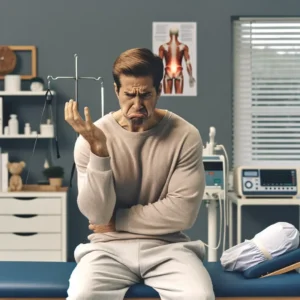
Traditional approaches to back pain relief have long been the go-to methods for patients seeking relief. These approaches often include medication, rest, and basic exercises. While these methods may provide temporary relief, they often fail to address the underlying causes of back pain, leaving patients stuck in a cycle of recurring discomfort.
One limitation of traditional approaches is that they focus solely on symptom management rather than targeting the root cause of the pain. This can lead to a Band-Aid approach, where pain is temporarily alleviated but not permanently resolved. Additionally, relying on medication for pain relief can result in unwanted side effects and dependency issues.
Another limitation is the lack of individualized treatment plans. Traditional approaches often follow a one-size-fits-all approach, assuming that what works for one patient will work for another. However, each person’s back pain is unique, and a personalized approach is crucial for effective treatment.
Furthermore, traditional approaches may not take into account the importance of holistic care. Back pain can be influenced by various factors such as posture, muscle imbalances, and lifestyle choices. Ignoring these aspects can hinder the healing process and prevent long-term relief.
Fortunately, innovative techniques in physical therapy are revolutionizing back pain relief. These cutting-edge approaches prioritize identifying the underlying causes of back pain and developing personalized treatment plans tailored to each patient’s specific needs. By addressing the root cause, these techniques aim to provide long-lasting relief rather than temporary respite.
Additionally, these innovative techniques emphasize a holistic approach to back pain relief. They consider not only the physical aspects but also the mental and emotional well-being of the patient. This comprehensive approach helps patients regain control over their pain and empowers them to make lasting lifestyle changes that promote overall back health.
In conclusion, while traditional approaches to back pain relief have their limitations, innovative techniques in physical therapy offer a promising alternative. By targeting the root cause, providing personalized care, and adopting a holistic approach, these techniques are revolutionizing the way back pain is treated, bringing hope and long-term relief to those suffering from this debilitating condition.
4. Exploring the role of physical therapy in back pain management
Physical therapy plays a crucial role in the management and treatment of back pain. With its focus on restoring function and reducing pain through targeted exercises, manual therapy, and patient education, physical therapy has revolutionized the way back pain is approached and treated.
One of the key benefits of physical therapy for back pain is its ability to address the underlying causes of pain, rather than just masking the symptoms. Through a comprehensive assessment, a skilled physical therapist can identify specific imbalances, weaknesses, or movement dysfunctions that may be contributing to the pain. By targeting these areas through personalized treatment plans, physical therapy aims to correct these issues and restore optimal function.
Physical therapy techniques for back pain management may include a variety of modalities. These can range from therapeutic exercises that strengthen the core and promote proper posture, to manual therapy techniques such as joint mobilizations and soft tissue mobilizations that help alleviate muscle tension and improve joint mobility. Additionally, modalities like heat or cold therapy, electrical stimulation, or ultrasound may be used to further reduce pain and promote healing.
Moreover, physical therapists play a crucial role in educating patients about their condition and providing them with tools and strategies to manage their back pain independently. This empowers patients to take an active role in their own recovery and prevents future recurrences or exacerbations of pain.
By exploring the role of physical therapy in back pain management, individuals can gain a deeper understanding of how this innovative approach can provide long-lasting relief. From identifying the root causes of pain to implementing personalized treatment plans and empowering patients through education, physical therapy offers a comprehensive and effective solution for revolutionizing back pain relief.
5. Innovative techniques in physical therapy for back pain relief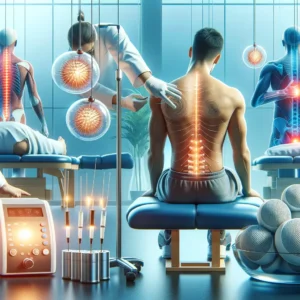
Physical therapy has long been a go-to solution for individuals suffering from back pain. However, as our understanding of the human body and advancements in technology continue to evolve, so too does the field of physical therapy. Today, innovative techniques are revolutionizing the way we approach back pain relief, providing patients with more effective and tailored treatments.
One such technique gaining traction is the use of manual therapy. This hands-on approach allows physical therapists to manipulate and mobilize the spine and surrounding tissues to alleviate pain, improve flexibility, and restore proper movement. Techniques like joint mobilization and soft tissue manipulation target specific areas, releasing tension and promoting healing.
Another innovative technique making waves in the field is the integration of technology. Therapists are now utilizing devices such as ultrasound, electrical stimulation, and laser therapy to enhance the effectiveness of their treatments. These technologies can help reduce inflammation, increase blood flow, and accelerate tissue repair, ultimately speeding up the healing process for patients.
Additionally, a growing trend in physical therapy is the incorporation of exercise and movement-based therapies. Therapists are now utilizing specialized exercises, such as Pilates, yoga, and functional training, to improve core strength, flexibility, and posture. These therapies not only provide relief from back pain but also help prevent future occurrences by addressing underlying imbalances and weaknesses.
Furthermore, innovative approaches like virtual reality and biofeedback are being explored to enhance patient engagement and outcomes. Virtual reality allows patients to immerse themselves in a virtual environment, distracting them from pain and facilitating relaxation. Biofeedback, on the other hand, provides real-time information about physiological processes, enabling patients to gain control over their body and make targeted improvements.
As the field of physical therapy continues to embrace these innovative techniques, individuals suffering from back pain can expect more personalized and effective treatment options. These advancements not only offer new avenues for relief but also empower patients to take an active role in their recovery journey. With a focus on innovation, physical therapy is shaping the future of back pain relief, providing hope and lasting solutions for those in need.
a. Manual therapy and mobilization techniques
Manual therapy and mobilization techniques have long been a cornerstone of physical therapy for back pain relief. These innovative techniques are designed to improve joint mobility, reduce pain, and enhance overall function.
One commonly used manual therapy technique is spinal manipulation, also known as spinal adjustments. This involves the application of controlled force to specific joints in the spine, with the aim of restoring proper alignment and function. Through skilled manipulation, physical therapists can alleviate pain, reduce muscle tension, and improve range of motion.
Another effective technique is mobilization, which involves gentle, repetitive movements of the joints and soft tissues. This technique aims to increase joint mobility, reduce stiffness, and enhance flexibility. Physical therapists use their hands to carefully apply pressure and guide the joints through their natural range of motion.
In addition to these hands-on techniques, physical therapists may also utilize other manual therapy modalities such as soft tissue mobilization, myofascial release, and trigger point therapy. These methods target specific areas of tightness or restriction in the muscles and soft tissues surrounding the spine, aiming to release tension, improve blood flow, and promote healing.
What sets these innovative techniques apart is the individualized approach taken by physical therapists. They carefully assess each patient’s unique condition and tailor the treatment plan to address their specific needs. By combining manual therapy techniques with targeted exercises, stretches, and other therapeutic interventions, physical therapists empower patients to actively participate in their own recovery.
It’s important to note that manual therapy and mobilization techniques should always be performed by a trained and licensed physical therapist. Their expertise and knowledge ensure that the techniques are applied safely and effectively, minimizing the risk of injury.
In conclusion, manual therapy and mobilization techniques are revolutionizing back pain relief in the field of physical therapy. These innovative approaches offer a personalized and holistic approach to treating back pain, helping patients regain their mobility, reduce pain, and improve their overall quality of life.
b. Therapeutic exercises and stretches
When it comes to back pain relief, therapeutic exercises and stretches play a crucial role in revolutionizing the field of physical therapy. These innovative techniques aim to restore strength, flexibility, and mobility to the affected muscles and joints, helping individuals find long-lasting relief from their back pain.
One of the primary goals of therapeutic exercises is to improve muscular endurance and stability. Physical therapists design personalized exercise programs that target specific muscle groups, taking into consideration the individual’s condition, limitations, and goals. These exercises may include a variety of movements such as strengthening exercises, stretching routines, and range of motion exercises.
Strengthening exercises focus on building the strength of the muscles supporting the spine, including the core muscles, back extensors, and abdominal muscles. By gradually increasing the resistance and difficulty of these exercises, individuals can improve their posture, spinal alignment, and overall stability. This, in turn, reduces the strain on the back and minimizes the risk of future injuries.
Stretching exercises, on the other hand, aim to improve flexibility and alleviate muscle tightness. Tight muscles can contribute to back pain and limited range of motion. Physical therapists employ various stretching techniques to target specific muscle groups, such as the hamstrings, hip flexors, and lower back muscles. These stretches not only reduce muscle tension but also improve overall flexibility, allowing for better movement and reduced stress on the spine.
Innovative techniques, such as dynamic stretching and myofascial release, have emerged in recent years, further enhancing the effectiveness of therapeutic exercises in back pain relief. Dynamic stretching involves active movements that mimic functional activities, preparing the muscles for physical exertion and promoting optimal muscle lengthening. Myofascial release, on the other hand, focuses on releasing tension and adhesions in the fascia, the connective tissue that surrounds and supports the muscles. This technique utilizes foam rollers, massage balls, and hands-on techniques to alleviate muscle restrictions and enhance overall mobility.
Therapeutic exercises and stretches not only provide immediate relief from back pain but also contribute to long-term rehabilitation and prevention of future injuries. By incorporating these innovative techniques into physical therapy sessions, individuals can experience a significant improvement in their quality of life and achieve a pain-free and functional back.
c. Incorporating technology and virtual reality
In today’s era of technological advancements, the field of physical therapy has not been left behind. Physical therapists are now revolutionizing back pain relief by incorporating cutting-edge technologies and virtual reality into their treatment techniques. These innovative methods are enhancing the overall patient experience and delivering exceptional results.
By harnessing the power of technology, physical therapists are able to provide more personalized and targeted treatment plans. Virtual reality, for instance, allows patients to immerse themselves in a simulated environment that is specifically designed to alleviate back pain. This technology creates a sense of presence and engagement, distracting patients from their discomfort and facilitating a faster recovery.
Moreover, virtual reality enables therapists to monitor and adjust exercises in real-time, ensuring that patients are performing them correctly and safely. This not only maximizes the effectiveness of the treatment but also minimizes the risk of further injury. Patients can receive instant feedback and guidance, leading to greater confidence in their rehabilitation journey.
Additionally, technology in physical therapy extends beyond virtual reality. Therapists are now utilizing advanced motion-capture systems that precisely track patients’ movements and provide precise data for analysis. This data-driven approach allows therapists to tailor treatment plans to the specific needs and abilities of each individual, optimizing the chances of successful outcomes.
With the integration of technology and virtual reality, physical therapy is entering a new era of back pain relief. Patients can now experience therapy in a more engaging and interactive manner, resulting in improved motivation and compliance. Furthermore, these innovative techniques enable therapists to provide individualized care that targets the root cause of the pain, leading to faster recovery and long-term relief.
As technology continues to evolve, the possibilities for revolutionizing back pain relief in physical therapy are endless. The future holds even more exciting advancements, promising a paradigm shift in the way we approach and treat back pain. Embracing these innovative techniques not only enhances patient outcomes but also showcases the dedication of physical therapists to staying at the forefront of their field and providing the best possible care for their patients.
d. Mind-body approaches such as yoga and meditation

Mind-body approaches such as yoga and meditation have emerged as powerful techniques in the field of physical therapy, revolutionizing back pain relief. These practices recognize the interconnectedness of the mind and body, emphasizing the importance of mental well-being in achieving physical health.
Yoga, with its centuries-old roots in ancient Indian traditions, has gained immense popularity as a therapeutic practice for back pain. Its gentle stretches, poses, and controlled breathing techniques not only promote flexibility, strength, and balance but also encourage mindfulness and body awareness. By cultivating a deep mind-body connection, individuals can effectively manage and alleviate their back pain.
Meditation, on the other hand, offers a calming and centering practice that can significantly reduce stress levels, a common contributor to back pain. Through focused attention and relaxation techniques, individuals can alleviate tension in the muscles, release emotional stress, and enhance overall well-being. By incorporating regular meditation into their routine, individuals can experience reduced pain, increased mobility, and improved quality of life.
These mind-body approaches complement traditional physical therapy techniques by addressing not only the physical symptoms but also the underlying mental and emotional factors that contribute to back pain. They empower individuals to take an active role in their healing process and provide them with valuable tools to manage their pain on a day-to-day basis.
Incorporating yoga and meditation into physical therapy sessions allows individuals to tap into their body’s natural healing abilities, promoting a holistic approach to back pain relief. By incorporating these innovative techniques, physical therapists can provide their patients with effective and sustainable solutions for long-term recovery. The integration of mind-body approaches in physical therapy is truly revolutionizing the way back pain is treated, offering individuals a path towards lasting relief and improved overall well-being.
e. Cutting-edge treatments like dry needling and cupping
In the ever-evolving field of physical therapy, innovative techniques are constantly being developed to provide effective and efficient relief for back pain. Two such cutting-edge treatments gaining popularity are dry needling and cupping.
Dry needling involves the insertion of fine needles into specific trigger points within the muscles. Unlike acupuncture, which is based on traditional Chinese medicine principles, dry needling is rooted in Western medicine and anatomy. By targeting these trigger points, physical therapists can release muscle tension, improve blood flow, and alleviate pain. This technique has shown promising results in reducing back pain, especially in cases of chronic muscle tightness and myofascial pain syndrome.
Cupping, on the other hand, involves the use of suction cups placed on the skin to create a vacuum effect. The cups can be made of various materials, such as glass, silicone, or plastic. When placed on the back, cupping creates a negative pressure that helps increase blood circulation, relax muscles, and promote healing. This technique has been used for centuries in traditional Chinese and Middle Eastern medicine, but its application in physical therapy has gained attention in recent years due to its potential benefits in relieving back pain and improving range of motion.
Both dry needling and cupping offer alternative approaches to traditional physical therapy techniques, providing patients with additional options for managing their back pain. It’s important to note that these treatments should only be performed by qualified and trained professionals who understand the intricacies of the techniques and can tailor them to individual needs.
As the field of physical therapy continues to advance, it’s exciting to see the integration of these cutting-edge treatments into practice. By embracing innovative techniques like dry needling and cupping, physical therapists are revolutionizing back pain relief and offering patients new avenues for finding lasting comfort and improved quality of life.
6. Case studies and success stories showcasing the efficacy of innovative techniques
Case studies and success stories are powerful tools to showcase the efficacy of innovative techniques in physical therapy. They provide tangible evidence of how these techniques have revolutionized back pain relief and transformed the lives of patients.
Imagine a patient who had been suffering from chronic back pain for years, unable to perform daily activities without discomfort. Through the application of innovative physical therapy techniques, their pain is significantly reduced, their mobility is restored, and they regain their quality of life. This success story not only inspires hope in others facing similar challenges but also serves as a testament to the effectiveness of these innovative approaches.
Case studies allow us to delve deeper into the specific techniques used, the challenges faced, and the outcomes achieved. They provide a comprehensive understanding of how these techniques address the root causes of back pain and bring about lasting relief. These real-life examples are invaluable in demonstrating the transformative impact of innovative physical therapy techniques.
Furthermore, success stories create a sense of trust and credibility. When potential patients read about the experiences of others who have found relief through these innovative techniques, they are more likely to consider them as viable options for their own back pain. These stories serve as a beacon of hope and encouragement, reassuring individuals that there are effective solutions available to alleviate their suffering.
In summary, case studies and success stories play a pivotal role in revolutionizing back pain relief through innovative techniques in physical therapy. They provide concrete evidence of the effectiveness of these approaches, inspire hope in others, and build trust in the potential of these techniques to transform lives.
7. Addressing common myths and misconceptions about physical therapy for back pain

Addressing common myths and misconceptions about physical therapy for back pain is crucial in revolutionizing the way people perceive and approach their pain relief journey. Despite its proven effectiveness, physical therapy often falls victim to misinformation and misunderstandings that can hinder individuals from seeking the help they need.
One common myth is that physical therapy is only for athletes or those who have undergone surgery. In reality, physical therapy is for anyone experiencing back pain, regardless of their level of physical activity or whether they have had surgery. Physical therapists are trained to assess and treat a wide range of conditions, from minor muscle strains to chronic back pain.
Another misconception is that physical therapy is painful and will exacerbate the pain. However, physical therapists employ a variety of techniques tailored to each individual’s needs, and their goal is to alleviate pain, not cause more discomfort. Through targeted exercises, manual therapy, and other modalities, physical therapy aims to improve mobility, strengthen muscles, and promote overall healing.
Furthermore, some people believe that physical therapy is a quick fix or a temporary solution. In reality, physical therapy takes a comprehensive and holistic approach to address the root causes of back pain. It involves not only treating the immediate symptoms but also identifying underlying issues, correcting movement patterns, and providing long-term strategies for prevention and maintenance.
It is also important to debunk the misconception that physical therapy is only effective for acute back pain and not for chronic conditions. Physical therapists are skilled in managing both acute and chronic pain, and they can develop personalized treatment plans to address the specific needs of each individual. With consistency and commitment, physical therapy can provide long-term relief and improve the quality of life for those suffering from chronic back pain.
By debunking these myths and misconceptions, individuals can be empowered to explore the transformative potential of physical therapy for back pain relief. It is essential to spread awareness about the effectiveness and accessibility of physical therapy, encouraging people to seek professional help and embark on a journey towards improved mobility, reduced pain, and enhanced overall well-being.
8. The importance of a holistic approach to back pain management
When it comes to managing back pain, taking a holistic approach is paramount. This approach focuses on addressing the underlying causes of the pain and not just treating the symptoms. By considering the entire person—their physical, mental, and emotional well-being—holistic therapies can provide more effective and long-lasting relief.
One key aspect of a holistic approach to back pain management is considering the individual’s lifestyle and daily habits. Often, poor posture, sedentary behavior, and improper body mechanics contribute to back pain. A skilled physical therapist will evaluate these factors and provide personalized recommendations to improve posture, ergonomics, and body mechanics. This may involve ergonomic adjustments at workstations, guidance on proper lifting techniques, and exercises to strengthen the core muscles that support the back.
Another important element of a holistic approach is addressing any psychological or emotional factors that may be contributing to back pain. Chronic pain can often lead to anxiety, depression, and stress, which can in turn exacerbate the pain. By integrating techniques such as cognitive-behavioral therapy, relaxation exercises, and mindfulness practices, physical therapists can help patients better cope with their pain and reduce its impact on their overall well-being.
Additionally, incorporating alternative therapies and complementary modalities can further enhance the holistic approach to back pain management. These may include acupuncture, massage therapy, chiropractic adjustments, and the use of heat or cold therapies. These treatments can help alleviate muscle tension, improve circulation, and promote relaxation, all of which contribute to reducing back pain.
By adopting a holistic approach to back pain management, individuals can experience not only relief from their immediate symptoms but also a comprehensive improvement in their overall quality of life. This approach allows for a deeper understanding of the root causes of back pain and empowers individuals to actively participate in their own healing process. So, if you’re seeking long-lasting relief from back pain, consider the benefits of a holistic approach and consult with a qualified physical therapist who can guide you on this transformative journey.
9. Tips for choosing a physical therapist experienced in innovative techniques
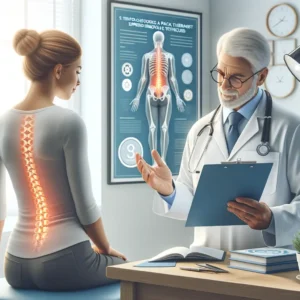
When it comes to finding a physical therapist who is experienced in innovative techniques for back pain relief, there are a few key tips to keep in mind. These tips will help ensure that you find a qualified professional who can provide you with the best possible care and help revolutionize your back pain relief journey.
First and foremost, it is essential to do your research. Look for physical therapists who specialize in innovative techniques specifically related to back pain. This could include techniques such as spinal manipulation, dry needling, or advanced exercise programs tailored to back pain management. By narrowing your search to therapists with expertise in these areas, you increase the likelihood of finding someone who can truly make a difference in your treatment.
Next, consider the therapist’s experience and credentials. Look for therapists who have a solid track record of success in treating back pain using innovative techniques. Check their qualifications, certifications, and any additional training they may have completed in the field of physical therapy. A therapist with extensive experience and a commitment to continuing education will likely have a wealth of knowledge and skills to offer in addressing your specific needs.
Additionally, don’t be afraid to ask for references or testimonials from previous patients. Hearing about others’ experiences can give you valuable insights into the therapist’s effectiveness and patient satisfaction. Online reviews and ratings can also provide helpful information in evaluating a therapist’s reputation and the quality of their innovative techniques.
Finally, consider the therapist’s communication style and approach to patient care. A good physical therapist should listen attentively to your concerns, thoroughly assess your condition, and develop a personalized treatment plan that incorporates innovative techniques tailored to your specific needs. They should also educate and empower you with self-care strategies and exercises that you can continue at home to support your recovery and prevent future issues.
By following these tips and taking the time to find a physical therapist who is experienced in innovative techniques for back pain relief, you can greatly increase your chances of finding effective and transformative care. Remember, it’s your health and well-being at stake, so don’t hesitate to prioritize finding the right therapist to revolutionize your back pain relief journey.
10. Conclusion: Embracing the future of back pain relief through innovation in physical therapy
In conclusion, embracing the future of back pain relief through innovation in physical therapy opens up a world of possibilities for those suffering from chronic or acute back pain. The traditional methods of treatment have come a long way, but with the introduction of innovative techniques, a new era of back pain management has dawned.
With advancements in technology, physical therapists now have access to state-of-the-art equipment and tools that can target specific areas of pain and provide targeted relief. From virtual reality therapy that helps patients retrain their muscles and improve posture to robotic-assisted therapy that enhances strength and mobility, the options are endless.
In addition to the technological advancements, there has been a shift in the approach to back pain relief. Physical therapists are now focusing on holistic and multidisciplinary approaches that take into account the individual needs of each patient. This includes incorporating alternative therapies such as acupuncture, yoga, and mindfulness practices, alongside traditional physical therapy techniques.
By embracing these innovative techniques, physical therapists are revolutionizing the way back pain is treated. Patients now have access to personalized and effective treatment plans that not only address the symptoms but also target the underlying causes of their pain.
As we look towards the future, it is clear that innovation in physical therapy will continue to play a significant role in back pain relief. By staying at the forefront of new research and advancements, physical therapists can provide their patients with the best possible care, improving their quality of life and helping them find long-lasting relief from back pain.
In conclusion, the future of back pain relief looks promising, thanks to the innovative techniques in physical therapy. By embracing these advancements and incorporating them into treatment plans, both patients and physical therapists can benefit from improved outcomes and a better understanding of back pain management. So let us embrace this revolution and pave the way for a pain-free future.
We hope you found our blog post on innovative techniques in physical therapy for back pain relief informative and inspiring. Back pain can be debilitating, but with the advancements in physical therapy, there are now more effective and revolutionary techniques available to provide relief. From specialized exercises to cutting-edge technologies, these techniques are revolutionizing the way we approach back pain treatment. If you or a loved one are suffering from back pain, we encourage you to explore these innovative options and consult with a physical therapist to find the best approach for your specific needs. Remember, a pain-free back is within reach, call us today at (810) 344-9810 to schedule a consultation!
——————————


